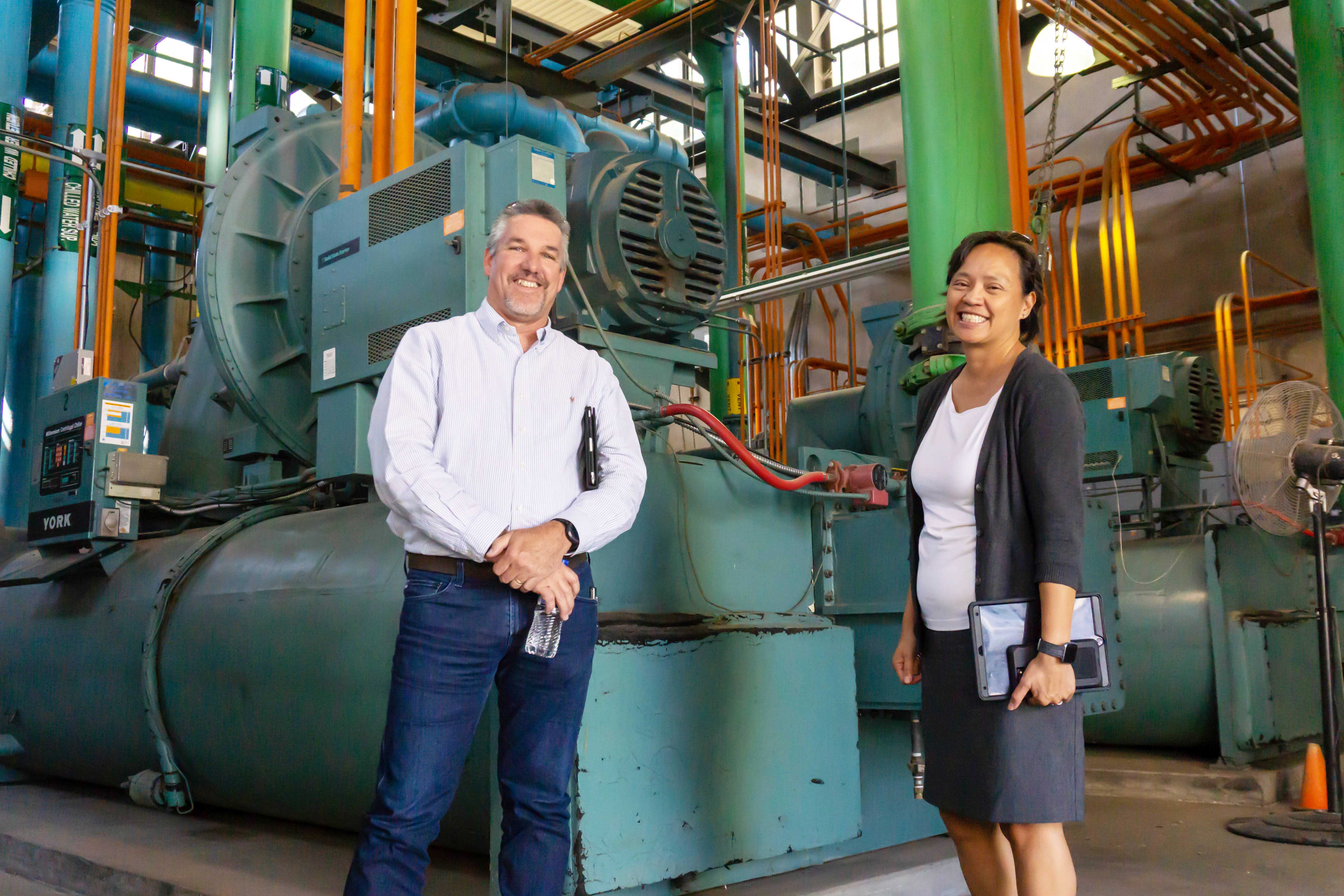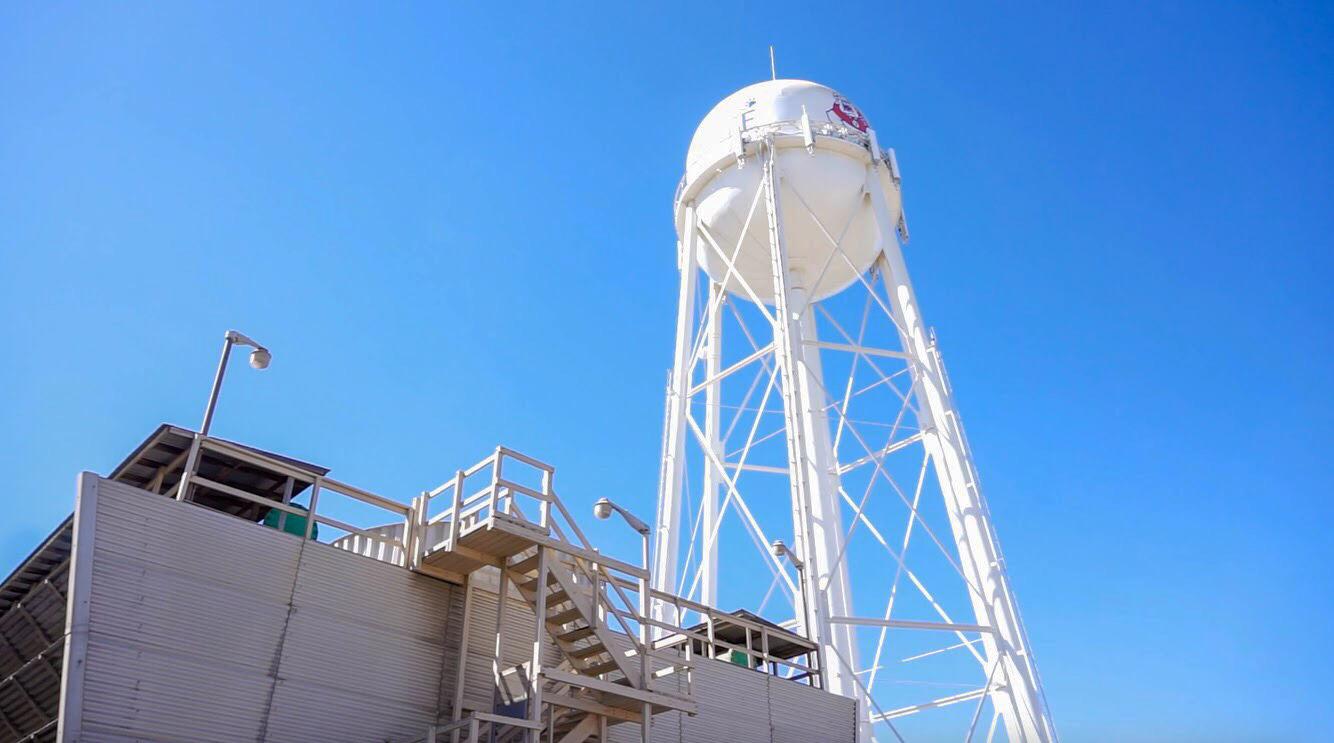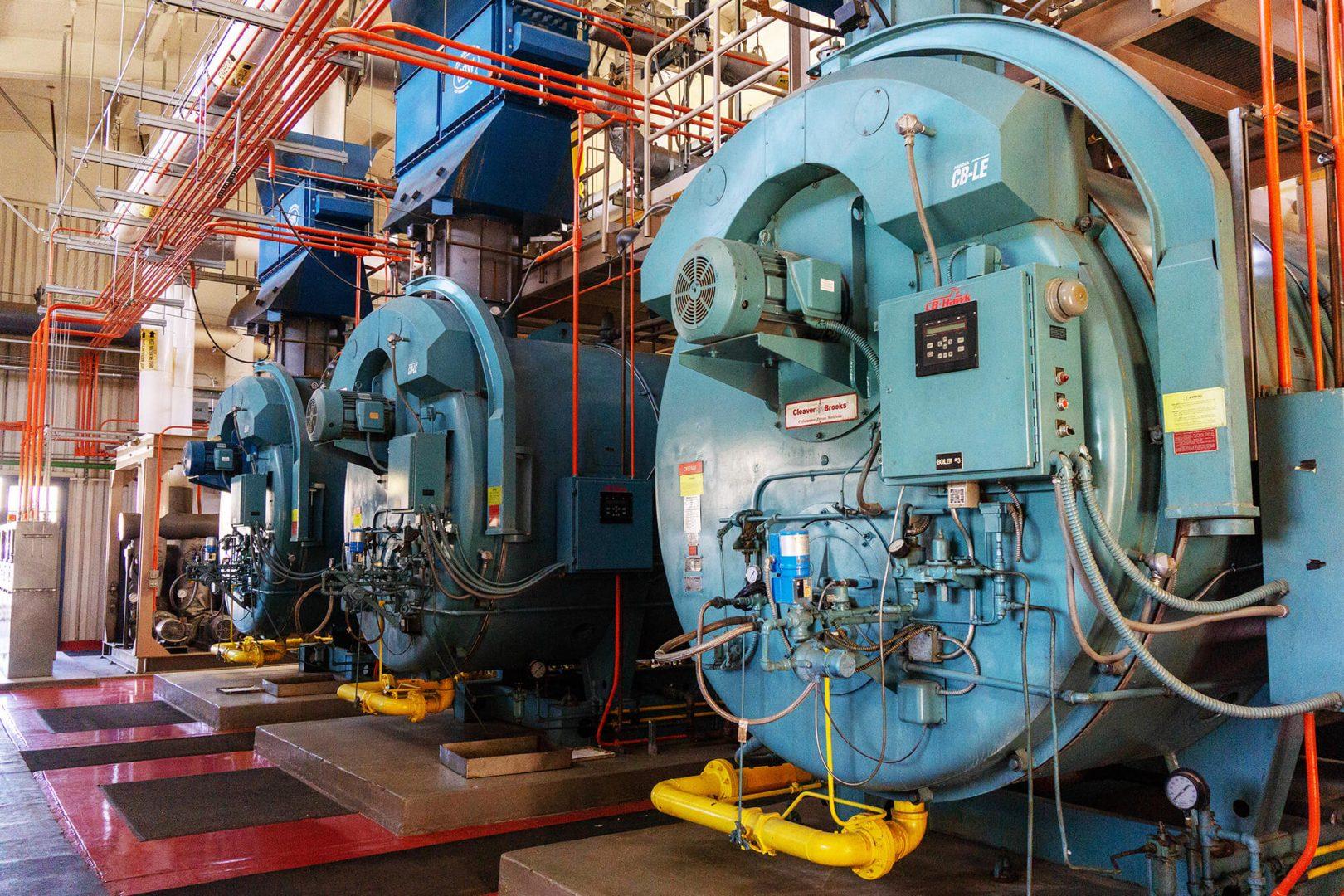Sixty percent of Fresno State facilities get their heating and cooling from a central plant located at the north end of the main campus. What few know is that should equipment at the plant fail — and the possibility of that happening grows with each day — the consequences would be disastrous.
If not for the iconic white water tower that peaks into the sky bearing the university’s name and mascot, the central plant’s location would largely go ignored by students and staff who travel around its perimeters. But its needs can’t go ignored any longer.
Tinnah Medina, associate vice president of Facilities Management, said the university is in the process of investing critical dollars into the central plant to avoid any catastrophic effects of having the aged equipment suddenly fail and leave about 1.8 million square feet of the campus without heating and cooling in its buildings.

“Our infrastructure is anywhere between 47 to 60 years old. By way of mechanical systems, that’s already nearing its second life cycle,” Medina said. “Usually a life cycle for this type of equipment is about 25 years.”
For those reasons, Medina says the project the university is undertaking is not in the interest of want, but in the interest of needs.
Project breakdown
There are several projects the university has in mind to fix the problem of aged equipment. The goal of university officials like Medina is that the replacement and upgrade of the central plant infrastructure will provide reliable air conditioning to campus buildings, including research facilities, and that an energy management system also in the plans can be used to “maximize efficiency” of the central plant.
“Right now, it’s a lot of manual labor,” according to Medina. “We’ve got a lot of guys that just kind of lived and grew up in this campus, and they have it all in their heads.”
Those maintenance personnel will only last so long, and Medina knows that. The central plant investment project is a glimmer of hope in the face of a university that has aged as it continues to grow.
The first of the replacements planned at the central plant is a deteriorating cooling tower built in 1974. Replacement parts for it are not available, according to Medina. A motorcycle parking lot on Jackson Avenue is considered a prime location to add new cooling towers.
“What we would do is add a modular cooling tower probably sitting right next to it. We would actually have it operate in conjunction with (the current cooling tower),” Medina said. “We’re not going to tear down the old one until it breaks … should one go down the other one will kick in.”

Medina added that the cooling tower is the Achilles’ heel of the central plant and a main point of focus in the project: “If it should go down, we would be out of cooling.”
Jeff Prickett, associate director of Facilities Operations, said the lack of cooling in buildings would cause overwhelming conditions for students, faculty and staff, especially in buildings that were built to keep windows from opening.
Also in the central plant, three boilers that were donated to the university by a cheese factory have also become inefficient and do not meet air standards, Medina said. They would be replaced.
Other repairs are for things not seen above ground but critical to the central plant’s operations. Medina said a hot water distribution system is experiencing hot water loss due to underground corrosion and faulty joints in its pipes.
The repairs to the central plant aren’t just pressed by the decaying infrastructure. An outlay of the central plant project says the project is in direct response to Fresno State’s strategic plan for 2016-2020, in which a priority is to align physical and technological infrastructure to support sustainable and welcoming campus environment.
The university also has to be in compliance with the California Global Climate Solutions Act (AB-32), which requires greenhouse gas emissions be reduced to 1990 levels by 2020.
Funding the project
There is still no clear total of how much the university will contribute to the cost or how much the California State University system will pitch in for the project. Systemwide, the CSU is making infrastructure improvements, according to Medina, but funding resources for the 23-campus system are lacking.
What is clear, however, is that the project won’t be cheap. An outline of costs prices the repairs and investment into the central plant at $71 million.
With dollars stretched thin across the CSU for campus improvements, plans are in place to fund the central plant project using a “P3,” or a “public, private partnership.”
The partnership would secure funding for the project and would include engineer, developer and financier partnerships who would design and eventually begin to rebuild the central plant.
Interest in the Fresno State project has come from as far away as Europe. Medina says it is the first time the CSU may establish a P3 to fund a campus project. A timeline on when firms would be selected to begin the project has not been determined.




